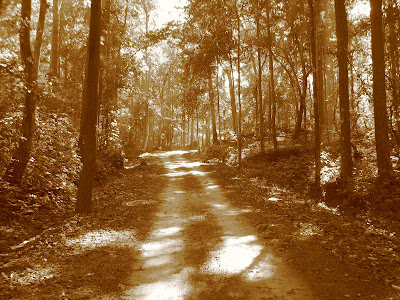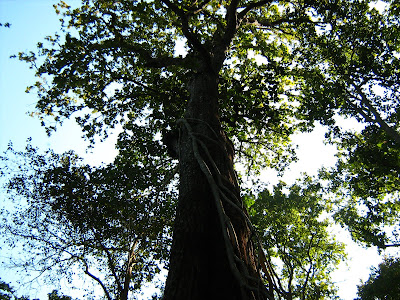









Dear Friends,
I Had the opportunity to visit the Forests of Simlipal in Mayurbhanj district of Orissa during the last couple of days (22-24th January, 2011) and have returned with a great experience. The National Park is far away from the maddening crowd, pollution and mechanical life and it holds the glory of nature with immense serenity and pure happiness.
Simlipal National Park is a national park and an elephant reserve situated in the Mayurbhanj District in Orissa, India. Simlipal National Park derives its name from the abundance of Semul or red silk cotton trees that bloom vividly.
The park has an area of 845.70 square kilometres (326.53 sq mi) and has some beautiful waterfalls like Joranda andBarehipani. Simlipal is home to ninety-nineRoyal Bengal Tigers, 432 Wild elephants. Besides Simlipal is famous for Gaurs (IndianBisons), Chausingha, as well as anorchidarium.
One can enter into Similipal through Pithabata (22 kilometres (14 mi) from Baripada) and Jashipur. Entry permits can be obtained from the Range Officer, Pithabata check gate upon paying prescribed fees. Day visitors can enter between 6 AM & 12 Noon and visitors with reservation between 6 AM & 9 AM. Similipal National Park remains open from 1 October to 15 June only.
Simlipal elephant reserve originated mainly as a hunting ground for the royalty. It was formally designated a tiger reserve in 1956 and underProject Tiger in May 1973. “Mugger Crocodile Scheme” was started in the year 1979 at Ramatirtha, Jashipur.
Government of Orissa declared Simlipal as a wildlife sanctuary in 1979 with an area of 2,200square kilometres (850 sq mi). Later in 1980, Government of Orissa proposed 303 square kilometres (117 sq mi) of the sanctuary as a National Park. Further in 1986, area of the national park was increased to 845.70 square kilometres (326.53 sq mi). Government of India declared Simlipal as a biosphere reservein 1994. UNESCOadded this National park to its list of Biosphere Reserves in May 2009. There are 10,000 people living in 61 villages in the forest. That is why Simlipal is yet to be declared a full-fledged park, despite its having the status of one of the fifteen biospheres of India.
The park is located in the Mayurbhanj District in the Indian state of Orissa. Simlipal elephant Reserve is an ecosystem complete with forest vegetation (mainly sal trees), fauna and the adjoiningSanthal tribal settlements. The park has a total area of 2,750 square kilometres(1,060 sq mi). The average elevation of 559.31metres (1,835.0 ft). However, the entire Simlipal area is undulating, rising from 600metres (2,000 ft) to 1,500 metres (4,900 ft). The high hills of Simlipal are surroundingMeghasani, the highest peak in the national park. at an altitude of 1,165 metres (3,822 ft), followed by Khairiburu at above 1,000 metres (3,300 ft) elevation. At least 12 rivers cut across the plain area. The prominent among them are Budhabalanga, Palpala Bandan, Kahairi and Deo. This sprawling forest also has many waterfalls such as, Joranda 493 feet (150 m) and Barehipani that are a perpetual attraction to the tourist, the latter at an elevation of 1,308 feet (399 m) gives a panoramic view of the park. It has withstood two cyclones in 1982 and 1999 without any prominent damages.
Summers are very hot with temperatures around 40 °C (104 °F) whereas the temperature during winter months can be as low as 14 °C (57 °F). The rainfall ranges from moderate to heavy.
Simlipal falls under a high cerebral malaria-prone zone. In cerebral malaria the sequestrated red blood cells can breach the blood brain barrier possibly leading to coma . Cerebral malaria, if not detected, causes death within 15 days of infection.
Initial symptoms of cerebral malaria are often mistaken as those of acute jaundice. There have been many recorded cases of death due to cerebral malaria after visits to Simlipal. Therefore, it is extremely important for tourists to be aware of the threats posed by cerebral malaria before planning a visit to Simlipal.
The park is a treasure house of 1076 species of plants belonging to 102 families. 96 species of orchids have also been identified here. It has a mixed type of vegetation known as Orissa semi-evergreen forests with tropical moist broadleaf forest and tropical moist deciduous forests with dry deciduous hill forest and high level Sal forests. Thegrasslands and the savannas provide grazing grounds for the herbivores and hiding place to the carnivores. The forest boasts of innumerable medicinal and aromatic plants, which provide a source of earnings for the tribal people.Eucalyptus, plantated by the British during the 1900 are also found.
A total of 42 species of mammals, 242 species of birds and 30 species of reptiles have been recorded in Simlipal National Park. The major mammals include Tiger, Leopard, Asian elephant,Sambar, Barking deer, Gaur, Jungle cat,Wild boar, Chausingha (four horned antelope), Giant squirrel and Common langur. 231 species of birds nest in these forests. Red Junglefowl, Hill Mynah,Peacock, Alexandrine Parakeet, Crested Serpent Eagle are the commonly found bird. The Grey Hornbill, Indian Pied Hornbill, Malabar Pied Hornbill and Indian Trogon are also found in the reserve.Apart from the large number of mammals and bird species, the park has a sizeable population of reptiles, which includes snakes and turtles. The "Mugger Crocodile Management Programme" has helped the Mugger crocodile (Crocodylus palustris) to survive and flourish on the banks of Khairi river.
Accommodation can be sought at Jashipur, the nearest town to the forests where a basic accommodation is available at the Crocodile Project in Ramtirtha. Ramtirtha is a pilgrimage sight where it is said that Rama, the important character of Ramayana had visited. The Khairi Bhandan River flows around the area. It is advisable to visit this jungle between November and March as it is extremely hot and humid for most of the year. There is also one accommodation facility which is available in the Core area called Chahala where the Kings of Mayurbhanj used to stay and hunt wild animals but it is not open to the general public these days and has been hit by severe Maoist activities recently. If you intend to travel from Kolkata, Take any express train of South Eastern Railways and reach Balasore via Kharagpur in Three and Half Hours time. From Balasore, Simlipal is at a distance of 160 kms. Some Photographs are attached herewith for your reference. Those who have Love for Nature and seek adventures can think of this great jungle which is highly appreciated by eminent writers from Bengal over the years.
Photographs: author
Source of Reference: Wikipedia
--
Cheers!!
SB
